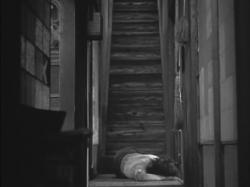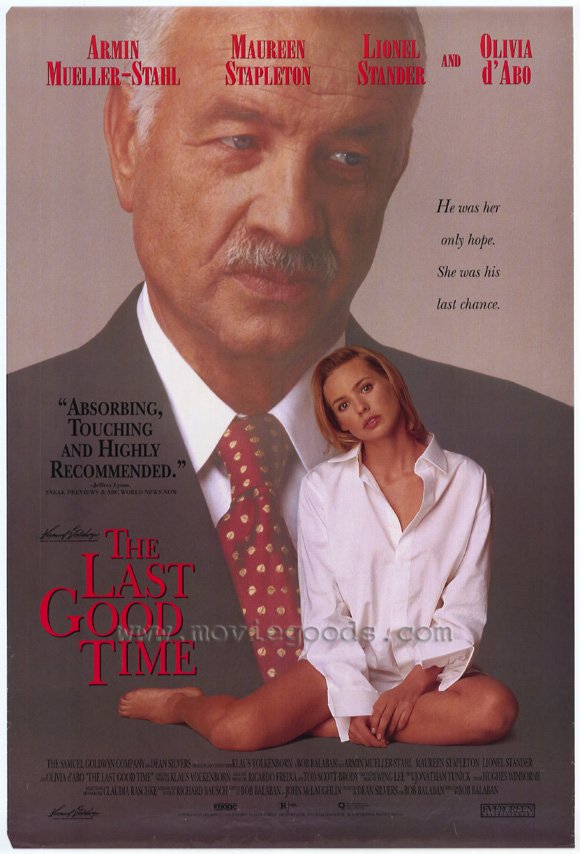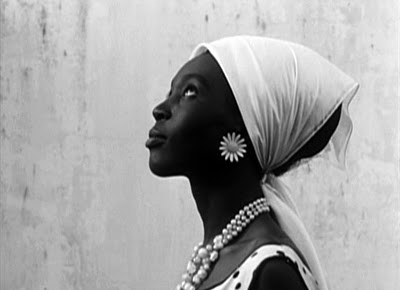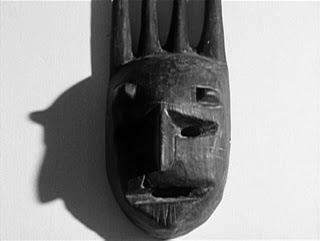Written for the British Film Institute’s DVD release of this film in early 2011. — J.R.

It would hardly be an exaggeration to call A Hen in the Wind (1948) one of the more neglected films of Yasujiro Ozu, especially within the English-speaking world. Made immediately before one of his key masterpieces, Late Spring (1949), it has quite understandably been treated as a lesser work, but its strengths and points of interest deserve a lot more attention than they’ve received. It isn’t discussed in Noël Burch’s To the Distant Observer: Form and Meaning in the Japanese Cinema (1979) or even mentioned in Kyoko Hirano’s Mr. Smith Goes to Tokyo: Japanese Cinema under the American Occupation, 1945-1952 (1992), the English-language study where it would appear to be most relevant. Although it isn’t skimped in David Bordwell’s Ozu and the Poetics of Cinema (1988), its treatment in Donald Richie’s earlier Ozu (1974) is relatively brief and dismissive. It seems pertinent that even the film’s title, which I assume derives from some Japanese expression, has apparently never been explicated in English.
It may be an atypical feature for Ozu, but it is stylistically recognizable as his work from beginning to end, especially when it comes to poetic handling of setting (a dismal industrial slum in the eastern part of Tokyo, where the heroine rents a cramped upstairs room in a house) and its use of ellipsis in relation to the plot. Read more
This appeared in the May 5, 1995 issue of the Chicago Reader. — J.R.

The Last Good Time
Rating *** A must see
Directed by Bob Balaban
Written by Balaban and John McLaughlin
With Armin Mueller-Stahl,Olivia d’Abo, Lionel Stander,Maureen Stapleton, Kevin Corrigan, Adrian Pasdar, and Zohra Lampert.
Bob Balaban, a native Chicagoan who’s best known as a prolific movie and stage actor, has directed only three features to date. I haven’t seen his second feature, My Boyfriend’s Back (1993), which some people tell me I’m better off having missed, but Parents, his first, was one of the most auspicious debuts of 1989.
Despite the radical differences between Parents and The Last Good Time in terms of genre, subject, style, and tone, they’re clearly the work of the same filmmaker. Part of this has to do with a precise feeling for place and a profound grasp of what sitting alone in a room feels like, even when other people are present. The solitary character in Parents is a ten-year-old boy who’s living with his parents in tacky 50s American suburbia. The monstrous (if typical) ranch-style house where they live is seen basically just as the boy experiences it — an expressionist, wide-angle nightmare etched in “cherry pink and apple blossom white” (to quote the song heard over the opening credits) that matches his parents’ taste and hypocrisy. Read more
From the Chicago Reader, April 21, 1995. It’s lamentable that, although Black Girl is now available on DVD from New Yorker, the color sequence in it appears in black and white. (In fact, I only saw this sequence in color for the first time when I showed this film in a course on world cinema of the 60s that I taught in Chicago in 2008.) To see this sequence in color, order the film’s BFI edition from Amazon UK. — J.R.


Black Girl
Rating **** Masterpiece
Directed and written by Ousmane Sembène
With Mbissine Thérèse Diop, Momar Nar Sene, Anne-Marie Jelinck, Robert Fontaine, Ibrahima Boy, and the voices of Toto Bissainthe, Robert Marcy, and Sophie Leclerc.
If you trace African film back to its first fiction feature, it is only 30 years old. Yet far from being underdeveloped, it begins on a more sophisticated level than any other cinema in the world. By some accounts Ousmane Sembène’s hour-long Black Girl was made in 1965, by others 1966, a characteristic ambiguity when it comes to African movies. Do you date them according to when they were made or when they were first shown? And given the scant and largely unreliable print sources that we have to check, how can we be sure about either date? Read more




